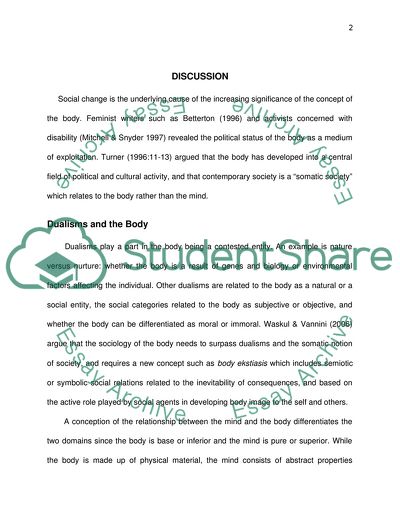Cite this document
(“Role of The Body in The Formation of Identities in Contemporary Research Paper”, n.d.)
Role of The Body in The Formation of Identities in Contemporary Research Paper. Retrieved from https://studentshare.org/sociology/1736885-sociology-of-the-body
Role of The Body in The Formation of Identities in Contemporary Research Paper. Retrieved from https://studentshare.org/sociology/1736885-sociology-of-the-body
(Role of The Body in The Formation of Identities in Contemporary Research Paper)
Role of The Body in The Formation of Identities in Contemporary Research Paper. https://studentshare.org/sociology/1736885-sociology-of-the-body.
Role of The Body in The Formation of Identities in Contemporary Research Paper. https://studentshare.org/sociology/1736885-sociology-of-the-body.
“Role of The Body in The Formation of Identities in Contemporary Research Paper”, n.d. https://studentshare.org/sociology/1736885-sociology-of-the-body.


